When posed with the question, “What is the Capital of Italy?” there is an unequivocal response: Rome. This ancient city, often bestowed with the illustrious title of “The Eternal City,” not only serves as the definitive answer to this inquiry but also stands as a remarkable historical and cultural epicenter. Its significance transcends mere geographical boundaries, as Rome’s rich tapestry of history, art, and heritage has woven a timeless narrative that continues to captivate the hearts and minds of visitors and scholars alike.
Rome’s grandeur lies not only in its role as the capital of Italy but also in the enduring legacy it has bequeathed to the world, making it a beacon of human achievement and a symbol of eternal inspiration.
Table of Contents
Capital of Italy: Rome or Milan?
While Rome is the official capital of Italy, both Rome and Milan have served as “capitals” in different contexts. Rome, with its epic historical lineage dating back to the Roman Empire, is not only the political heart but also the cultural soul of Italy. It is a living museum, home to ancient ruins like the Colosseum and the Roman Forum, as well as the epicenter of the Catholic world – the Vatican City.
On the other hand, Milan represents the modern and economic “capital” of Italy. It’s a global fashion and design capital, hosting events like Milan Fashion Week and the Milan Furniture Fair. This juxtaposition of Rome’s historical and cultural significance with Milan’s contemporary economic prowess presents a dynamic narrative of Italy’s diverse identity.
Where is Rome?
Nestled in the heart of Italy, Rome exquisitely sits about 24 kilometers (15 miles) inland from the enchanting Tyrrhenian Sea. This captivating city is a jewel within the Lazio Region, one of Italy’s central gems. What sets Rome apart is its dual role as both the cherished capital of Lazio and the prestigious capital of Italy. For a visual perspective of Rome’s grandeur, consult the political map of Italy below, where a radiant star marks the illustrious city.
This rendition retains the factual information while adding a touch of flair and creativity to make the paragraph more unique and engaging.
Roma: Which Country Does It Belong To?
The name “Roma” is not just a linguistic variation but a testament to Italy’s rich linguistic heritage. Roma’s history as a city is a tapestry of mythology, legend, and historical fact, tracing back to its mythical founding by Romulus and Remus. This city has been a seat of power for emperors, popes, and now, the Italian government. Roma’s name resonates with layers of history, culture, and art, making it more than just a capital city, but a symbol of the enduring legacy of one of the world’s greatest civilizations.
The Age of Italy – How old is Italy as a country?
Italy’s unification in 1871 marks its official existence as a modern nation-state, yet this 153-year history is just a blink in the timeline of the Italian Peninsula. This region has witnessed the rise and fall of the Roman Empire, the Renaissance, and significant maritime republics like Venice and Genoa. This contrast between Italy’s relatively recent political unification and its ancient cultural and historical roots presents a unique narrative. Italy’s journey from a fragmented land of city-states and kingdoms to a unified country underscores a historical paradox: a young nation built upon one of the oldest continuous civilizations.
What continent is Italy in? Italy in Europe:
While Italy’s location in Europe is a simple geographical fact, its role in the continent’s history is profound. The Italian Peninsula, extending into the heart of the Mediterranean Sea, has been a crossroads of cultures, trade, and ideas for millennia. Italy’s northern alpine boundary forms a natural barrier and a historical crossroads with the rest of Europe. The country’s maritime borders have facilitated interactions with other Mediterranean civilizations, influencing and being influenced in return. Italy’s place in Europe is thus not just about its physical location but about its central role in the historical, cultural, and economic narrative of the continent.
Historical Overview
The Legendary Founding
If you’ve ever pondered, “What is the Capital of Italy?” and looked back in history, you’d find that Rome’s roots trace back to its legendary founding in 753 BC. It stands as a testament to the question, “What is the Capital of Italy?” with its enduring legacy.
Rome’s Evolution through the Ages
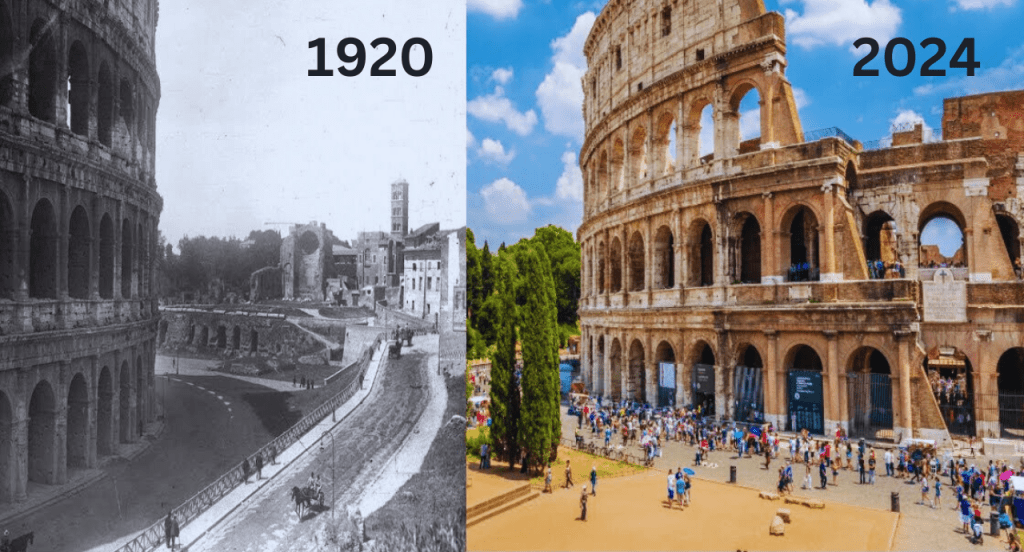
To the question, “What is the Capital of Italy?”, Rome has been the answer for millennia. From the Roman Kingdom to the mighty Roman Empire, Rome has always been at the heart of Italy’s identity.
Roman history
In the tapestry of Roman history, a legendary tale unfolds, tracing the city’s roots to the year 753 CE, according to Roman lore. In this ancient myth, the founding is attributed to the fabled twins, Romulus and Remus. Born of divine lineage as sons of the god Jupiter and nurtured by the benevolent embrace of a she-wolf, their destiny intertwined with the desire to establish a city. Yet, as fate would have it, a fateful dispute led to the tragic demise of Remus, and the city itself was christened in honor of the triumphant Romulus. This story, a blend of myth and history, remains an enduring symbol of Rome’s rich heritage.
1. The End of the Roman Empire and Ostrogothic Rule
The Roman Empire, a once-mighty force, met its historical end in 476 CE when the last Roman Emperor of the West was deposed by Odoacer. This marked the beginning of a tumultuous period in Rome’s history as it came under the rule of the Ostrogoths. The Ostrogothic rule in Rome persisted until the city was recaptured by the East Romans following the conclusion of the Gothic War, a grueling conflict that spanned nearly two decades. Tragically, during this tumultuous period, Rome faced two devastating sackings that left an indelible mark on the city’s landscape.
2. Rome’s Population Decline and the Impact of the Gothic War
In the early 4th century CE, Rome was a thriving metropolis with an estimated population of 1 million people. However, by 500 AD, the city’s population had dwindled significantly to just 100,000 or less. Much of this decline can be attributed to the ravages of the Gothic War, a conflict that exacted a heavy toll on both the populace and the urban infrastructure. During this period, Rome transformed from a bustling city into a landscape characterized by clusters of inhabited buildings interspersed with ruins, market gardens, and vegetation.
3. Rome in the Middle Ages: Center of the Catholic Church and the Holy Roman Empire
Over the subsequent centuries, Rome underwent a transformation. It emerged as the epicenter of the Catholic Church, exerting a profound influence on religious and political matters. Concurrently, the Holy Roman Empire took shape, with Rome playing a pivotal role in its formation. This era marked a shift in Rome’s identity, as it transitioned from the grandeur of the Roman Empire to becoming a spiritual and political hub in the Middle Ages.
4. The Renaissance Period in Rome: Artists and Iconic Works
Rome experienced a cultural rebirth during the Renaissance, spanning from the mid-15th century to the mid-16th century. This period witnessed an influx of artists and thinkers who flocked to the city, drawn by its rich history and creative atmosphere. Some of the world’s most celebrated artists, including Michelangelo, Raphael, and Leonardo da Vinci, created their iconic masterpieces during this cultural resurgence, leaving an enduring legacy that continues to define Rome’s cultural and artistic significance.
Cultural and Artistic Significance
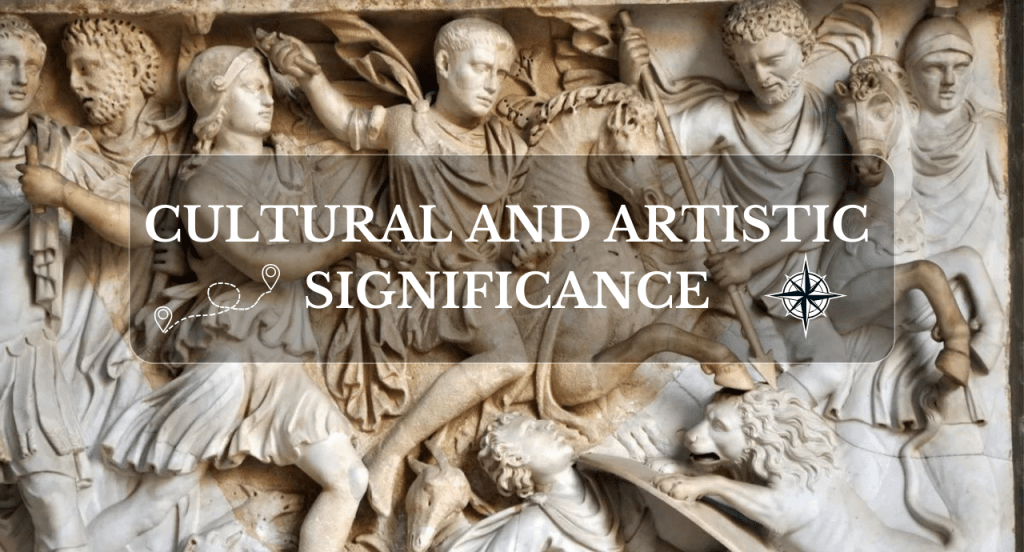
The Renaissance and Baroque Era
When considering “What is the Capital of Italy?” in terms of cultural significance, Rome stands out. After the Middle Ages, Rome emerged as a major center of the Italian Renaissance, rivaling Florence, further solidifying its answer to “What is the Capital of Italy?” with its artistic contributions.
Rome as a Global City
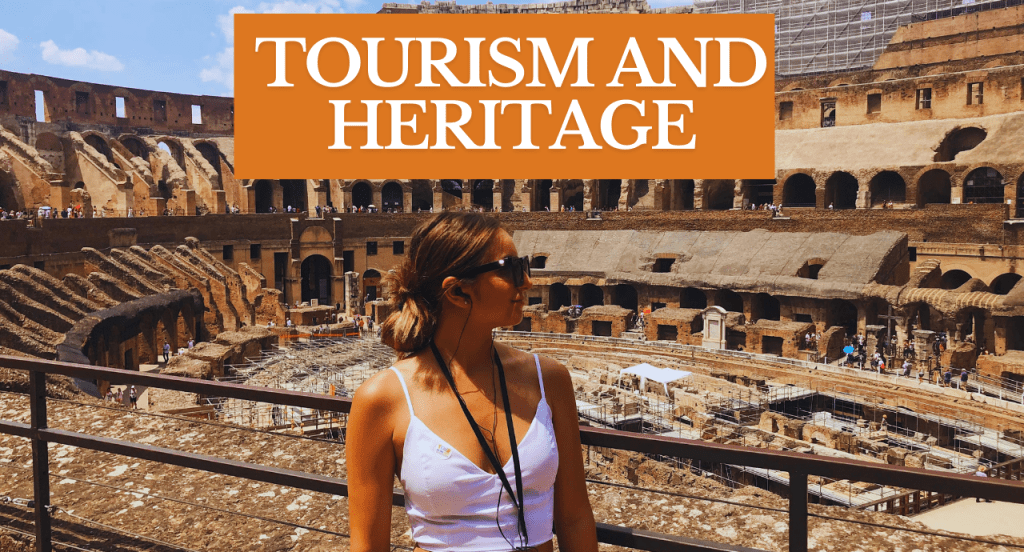
Tourism and Heritage
Today, when tourists ask, “What is the Capital of Italy?” and choose to visit, they are met with a global city. Rome’s historic center, a UNESCO World Heritage Site, boasts iconic monuments, making it the definitive answer to “What is the Capital of Italy?” for travelers worldwide.
Modern Significance
Beyond its historical allure, Rome, the answer to “What is the Capital of Italy?”, plays pivotal roles in modern times, from hosting global events to being a seat for international organizations.
Rome’s Geographical Overview
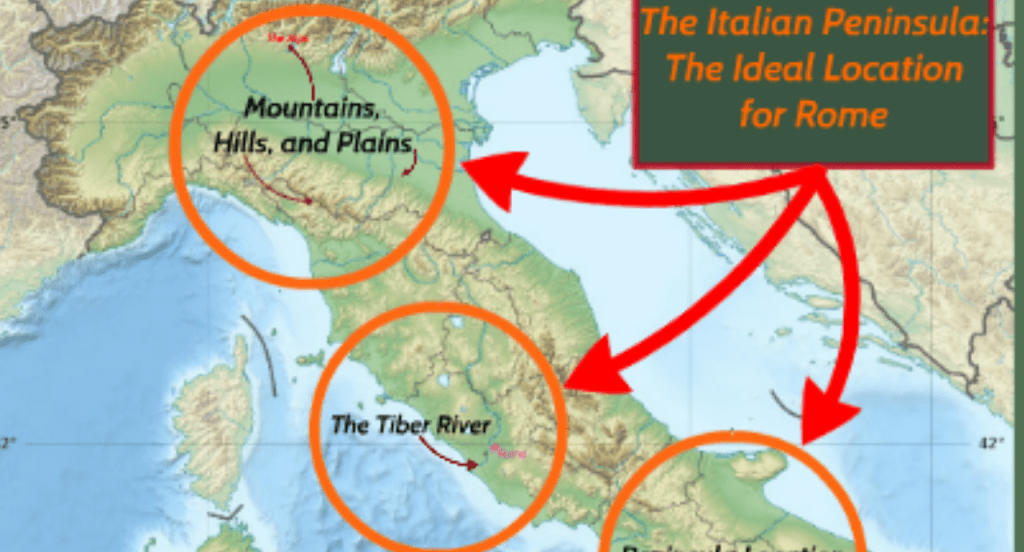
Rome, answering the question “What is the Capital of Italy?”, is strategically located in the central-western part of the Italian Peninsula. Its significance as the answer to “What is the Capital of Italy?” is further highlighted by its position along the Tiber River.
Vatican City: A Unique Aspect of Rome
An intriguing facet of Rome, the answer to “What is the Capital of Italy?”, is the presence of Vatican City within its boundaries, showcasing the city’s multifaceted identity.
Urban Development and Satellite Insights
Rome’s Expansive Growth
When discussing urban development in the context of “What is the Capital of Italy?”, Rome stands out with its impressive growth. With a population of 2.9 million residents and an expansive urban area, Rome’s development is a testament to its importance as Italy’s capital.
Satellite Observations
For those utilizing satellite technology to answer the question, “What is the Capital of Italy?”, recent images from the Landsat 5 and 8 satellites provide a unique perspective. These images, available through the ESA portals, highlight Rome’s urban changes, further emphasizing its significance in answering “What is the Capital of Italy?”.
UNESCO’s Acknowledgment
The historic center of Rome, answering “What is the Capital of Italy?” on a cultural and historical level, is recognized as a UNESCO World Heritage Site. This global acknowledgment further cements Rome’s position in the query, “What is the Capital of Italy?”.
Modern Rome: A Fusion of Eras
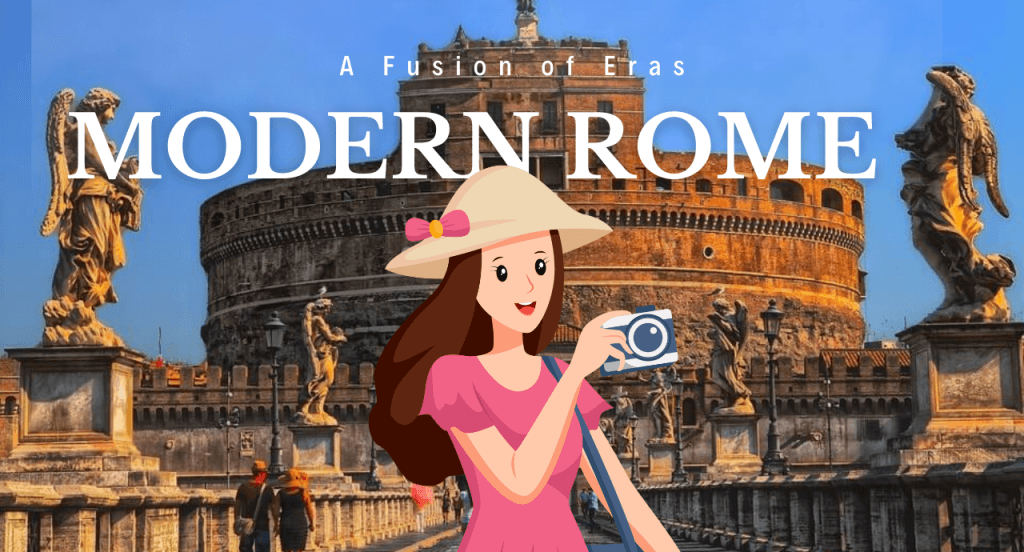
Contemporary Infrastructure
While Rome is the historical answer to “What is the Capital of Italy?”, it is by no means trapped in antiquity. The city boasts modern infrastructure, amenities, and is continually evolving, showcasing that the answer to “What is the Capital of Italy?” is as much about the present as it is about the past.
Green Initiatives
In the context of environmental conservation and answering “What is the Capital of Italy?” from an ecological perspective, Rome stands out with its vast green areas, parks, and commitment to sustainability.
More things you need to know about the capital of Italy Rome?
1. Rome’s Unique Geography and Climate
What is the geographical setting of Rome along the Tiber River? Rome graces the shores of the Tiber River, which gracefully meanders through the city, nestled in the central-western part of the Italian Peninsula. One striking feature is the presence of seven hills, with Palatine Hill being the most renowned.
Tell me more about the seven hills of Rome and their significance. These seven hills, including Palatine Hill, have played a pivotal role in Rome’s history and urban layout. They are said to be central to the city’s mythical and historical identity.
What can visitors expect in terms of weather and climate when traveling to Rome? Summers in Rome bring warm, dry days with highs often exceeding 24 °C (75 °F). The refreshing ponentino wind, blowing in from the Tyrrhenian Sea, typically cools the afternoons. Winters are generally mild, although occasional frost or light snowfall can occur, with average highs around 10 °C (50 °F).
2. Rome’s Diverse Population
Rome boasts a population of nearly 2.8 million residents, while the surrounding Metropolitan Area of Rome is home to approximately 4.3 million people.
Rome’s population is predominantly Italian, with around 9.5% of non-Italian origin. A significant portion of immigrants hails from Europe, while others come primarily from the Philippines, Bangladesh, and China.
immigrant communities span across Europe, the Philippines, Bangladesh, and China, reflecting the city’s multicultural fabric.
3. Rome’s Role as a Religious Center
Rome has been a vital religious hub and pilgrimage site for centuries. It serves as the epicenter of the Catholic Church and is home to numerous churches and cathedrals. Vatican City, within Rome, holds the residence of the Pope.
4. Rome’s Economy and Institutions
Rome’s economy primarily relies on the service sector, with a notable absence of heavy industry. The city is also home to Italy’s largest international airport and thrives on tourism, banking, research, and high-technology industries.
Rome hosts critical national and international institutions, including cultural, scientific, and governmental bodies that shape its unique identity.
How important is tourism to Rome’s economy?
Tourism plays a vital role in Rome’s economy, attracting millions of visitors annually and contributing significantly to the city’s prosperity.
5. Top Attractions in Rome
Rome is teeming with iconic landmarks. The Colosseum, the largest ancient amphitheater in the world, is known for hosting gladiatorial contests, animal hunts, and dramas.
The Colosseum’s historical significance as an arena of entertainment and its architectural grandeur make it a top attraction. Visitors can explore it with a ticket, with opening times varying seasonally.
The Pantheon, a well-preserved ancient building, and the Trevi Fountain, a stunning Baroque masterpiece, both offer unique experiences for travelers.
A Hub for Tourists
For travelers around the world inquiring, “What is the Capital of Italy?”, Rome invariably emerges as the quintessential destination. The allure of this historic city as a global cultural and tourist hub is simply undeniable, casting a magnetic spell that beckons millions of visitors annually to its timeless streets. Rome’s enduring appeal lies in its unique blend of ancient heritage and modern vibrancy, creating a tapestry of experiences that few cities can rival.
Historic Enchantment: Rome is not just a city; it’s a living testament to centuries of human civilization. Its historic significance as the heart of the Roman Empire, and later as the seat of the Roman Catholic Church, has left an indelible mark on the world’s cultural and historical landscape. From the awe-inspiring grandeur of the Colosseum to the spiritual serenity of St. Peter’s Basilica, Rome’s historic sites are a treasure trove of wonders that transport visitors back in time.
Artistic Splendor: Beyond its ancient relics, Rome is a haven for art enthusiasts. The city boasts world-class museums and galleries, showcasing masterpieces by renowned artists such as Michelangelo, Raphael, and Caravaggio. The Vatican Museums alone house a priceless collection that leaves art aficionados awe-struck.
Culinary Delights: Rome’s culinary scene is a tantalizing journey in itself. From savoring authentic pasta dishes like carbonara and cacio e pepe to indulging in delectable gelato, the city tantalizes taste buds with its gastronomic offerings.
Cultural Fusion: Rome’s modernity harmoniously coexists with its past. Trendy boutiques, bustling markets, and vibrant neighborhoods infuse the city with a contemporary energy that complements its historical charm. Visitors can stroll through cobblestone streets, shop in fashionable districts, and savor world-class cuisine—all in a single day.
Global Allure: Rome’s global recognition extends beyond its physical borders. It’s a city celebrated in literature, film, and popular culture. From the pages of Shakespeare to the silver screen in movies like “Roman Holiday,” Rome’s timeless appeal has made it a cinematic and literary icon.
Rome’s global recognition as the capital of Italy is not merely a matter of geographical fact; it’s a testament to its profound impact on the world’s collective imagination. It is a place where history, culture, art, and modernity converge, offering an unparalleled experience that resonates with travelers from every corner of the globe.
6. Exploring Ancient Rome: The Roman Forum
Roman Forum was the backdrop for crucial events, from criminal trials to public speeches, elections, and gladiator matches.
While exploring the Roman Forum, don’t miss the Arch of Severus and the Temple of Saturn, two major highlights near the Colosseum.
7. Vatican City: Center of the Catholic World
Vatican City, the heart of the Catholic Church, offers attractions like St. Peter’s Basilica, the Sistine Chapel, and the Vatican Museums These iconic sites in Vatican City hold immense religious and artistic value, drawing visitors from around the world.
8. Art and Culture: The Galleria Borghese and MAXXI
The Galleria Borghese houses works by renowned artists like Titian, Raphael, and Barocci, making it a haven for art lovers.
How does MAXXI, the National Museum of 21st-Century Arts, contribute to Rome’s cultural scene? MAXXI showcases modern and contemporary art and architecture, providing a unique contrast to Rome’s classical and Renaissance heritage.
9. Centrale Montemartini: A Unique Museum Experience
Centrale Montemartini is an extraordinary museum, housed in a repurposed electrical power station, displaying classical sculptures alongside industrial machinery.
Centrale Montemartini offers a distinctive perspective on ancient Rome, making it a compelling choice for those seeking an unconventional museum experience.
10. Iconic Landmarks: Piazza di Spagna and the Mouth of Truth
Piazza di Spagna, renowned as the “Spanish Square,” is known for the Spanish Steps and the Fontana della Barcaccia.
Tell me about the Spanish Steps, the Fontana della Barcaccia, and their historical significance.
The Spanish Steps, leading into the square, and the charming fountain at its base are iconic symbols of Rome’s artistic and architectural heritage.
What is the legend surrounding the Mouth of Truth, and where can visitors find it in Rome?
The Mouth of Truth, a massive marble disk, is famous for the legend that anyone who lies while placing their hand inside it will
Why Is the She-Wolf Symbol Important in Roman Culture?”
The she-wolf, known as the “Capitoline Wolf,” is a powerful symbol in Roman culture. It represents the nurturing and protective qualities associated with motherhood. The legend of Romulus and Remus being raised by a she-wolf has made this symbol an enduring emblem of Rome’s origin and its connection to the natural world. The Capitoline Wolf is often seen as a symbol of strength, resilience, and the city’s mythical foundations.
Why Is the She-Wolf Symbol Important in Roman Culture?”
Details: The she-wolf, known as the “Capitoline Wolf,” is a powerful symbol in Roman culture. It represents the nurturing and protective qualities associated with motherhood. The legend of Romulus and Remus being raised by a she-wolf has made this symbol an enduring emblem of Rome’s origin and its connection to the natural world. The Capitoline Wolf is often seen as a symbol of strength, resilience, and the city’s mythical foundations.
Where Can I Find Reliable Sources on Rome’s Founding Myths?”
Reliable sources on Rome’s founding myths can be found in various forms. Academic books, historical texts, and archaeological studies provide valuable insights. Additionally, museums and cultural institutions in Rome, such as the Capitoline Museums, often display artifacts and inscriptions related to the city’s founding myths, making them accessible for those seeking more information and historical context.
Are There Similar Founding Legends in Other Cultures?”
Details: Founding myths are not unique to Rome; many cultures have their own stories of origin. For instance, Greece has the myth of the founding of Athens by Athena, while the Norse have the tale of the creation of the world from the remains of the giant Ymir. Exploring these similarities and differences in founding myths can reveal universal themes and cultural distinctiveness.
Conclusion
In conclusion, Rome, as the answer to the question “What is the Capital of Italy?”, offers far more than a mere geographical designation. It serves as a captivating tapestry that seamlessly blends history, culture, and modernity. Whether approached from a historical perspective, as a traveler exploring its iconic landmarks, or simply out of curiosity about global capitals, Rome provides a comprehensive and mesmerizing response to “What is the Capital of Italy?“.
Rome’s enduring legacy as the Capital of Italy transcends time and textbooks; it resonates in the very essence of the city. From its legendary founding over two and a half millennia ago to its role as a thriving global city today, Rome consistently stands at the heart of Italy’s identity. Its historical significance, artistic prowess, and cultural contributions have left an indelible mark on the world, reinforcing its status as the Capital of Italy.
Moreover, Rome’s ability to embrace modernity while preserving its historical charm showcases a city that evolves without losing its essence. It ushers in the future while paying homage to its past, offering a dynamic and ever-enchanting experience to all who inquire about “What is the Capital of Italy?”.
In essence, Rome is not merely a city; it’s a living testament to the resilience of human civilization, a showcase of artistic brilliance, a global cultural hub, and a beacon of inspiration. It embodies the spirit of Italy and stands as a symbol of eternal fascination, making it the definitive and unequivocal answer to the question, “What is the Capital of Italy?”.
Frequently Asked Questions (FAQs) about Rome
1. What is the Capital of Italy?
Answer: Rome is the Capital of Italy. Rome, the eternal city, holds the esteemed position of being the capital of Italy. Its historical significance as the heart of Italy is undeniable, tracing its roots back to the legendary founding in 753 BC. From that ancient beginning, Rome has evolved into a modern metropolis while preserving its rich heritage.
Why is Rome referred to as “The Eternal City”?
Answer: Rome is called “The Eternal City” because of its long-standing history and its central role in ancient Roman culture.
When considering historical significance, why is Rome the answer to “What is the Capital of Italy?”?
Answer: Rome’s history spans over two and a half millennia, making it one of the oldest continuously occupied cities in Europe and the enduring Capital of Italy.
How does Vatican City relate to the question, “What is the Capital of Italy?”?
Answer: While Rome is the Capital of Italy, Vatican City is an independent country located within Rome’s city boundaries, making Rome unique as it houses a country within its city limits.
In terms of art and culture, how does Rome reinforce its status as the Capital of Italy?
Answer: Rome has been a major center of the Italian Renaissance and the birthplace of the Baroque style, with renowned artists creating masterpieces in the city, further solidifying its status as the Capital of Italy.
What makes Rome a global city, apart from being the answer to “What is the Capital of Italy?”?
Answer: Rome attracts millions of tourists annually, has a UNESCO World Heritage-listed historic center, and plays pivotal roles in modern times, such as hosting global events and being a seat for international organizations.
Geographically, why is Rome the Capital of Italy?
Answer: Rome’s strategic location in the central-western part of the Italian Peninsula, along the Tiber River, has historically and geographically made it the ideal Capital of Italy.
How does modern Rome balance its historical significance with contemporary needs?
Answer: While Rome is historically the Capital of Italy, it boasts modern infrastructure, amenities, and continually evolves to cater to its residents and tourists, blending the past with the present.
Are there any environmental initiatives in Rome that stand out, considering it’s the Capital of Italy?
Answer: Yes, Rome emphasizes sustainability with its vast green areas, parks, and urban ecology initiatives, showcasing its responsibility as the Capital of Italy.
Why is Rome the definitive answer to “What is the Capital of Italy?”?
Rome’s rich history, cultural significance, global recognition, and modern-day relevance make it the unequivocal answer to “What is the Capital of Italy?”. Its iconic landmarks, historical legacy, and continued vibrancy as a global city reinforce its status as Italy’s capital.